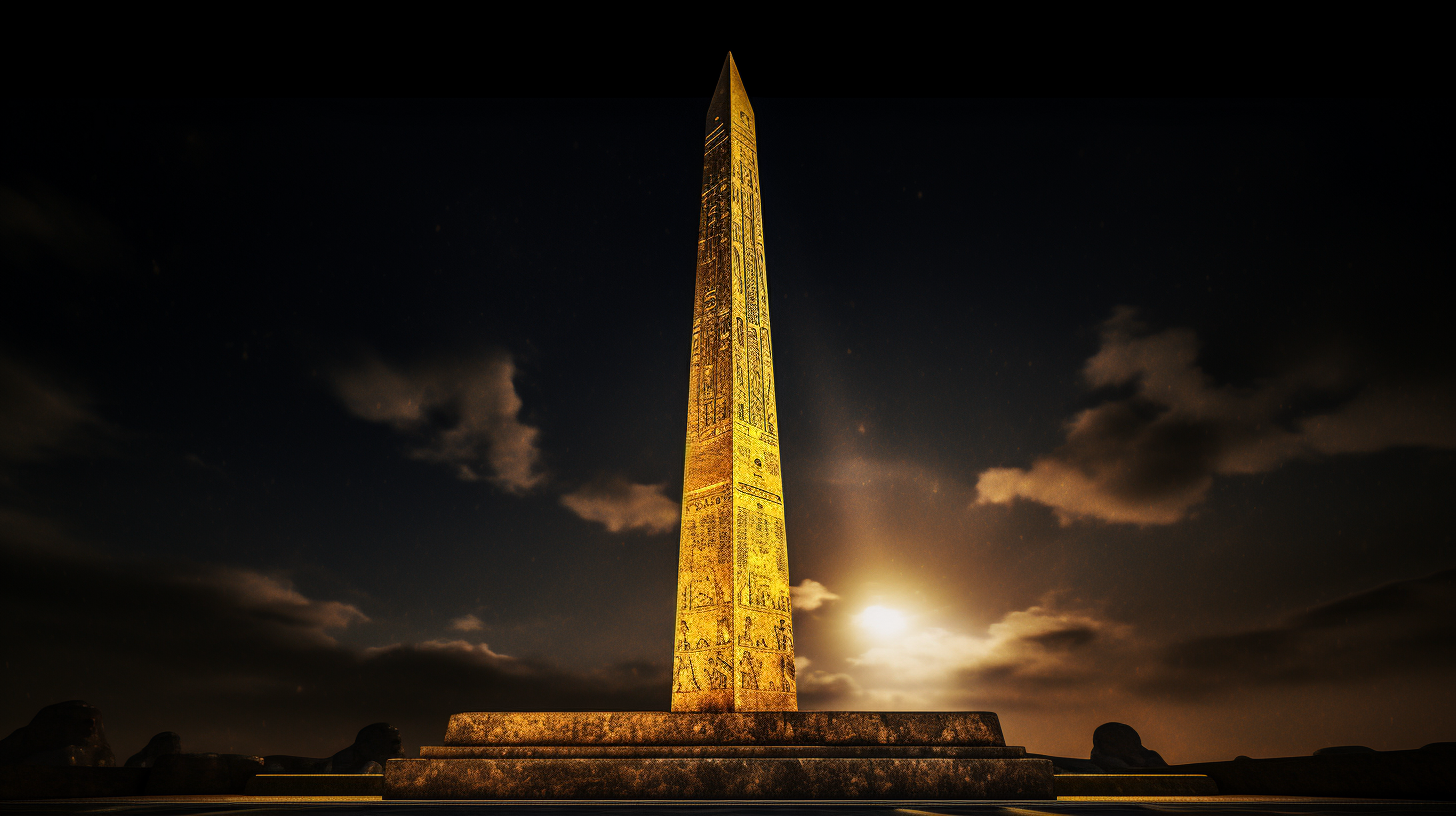In the ancient world, one often ponders extraordinary architectural feats like the Egyptian pyramids or the vast Great Wall of China. Yet, amidst these renowned marvels lies a concealed and captivating form known as obelisks.
Capturing the interest of historians and modern theorists, these remarkable four-sided monuments propose a fascinating connection with advanced technology. Let’s venture into the realm of ancient obelisks and reveal the enthralling mysteries they contain.
The Timeless Influence of Obelisks Over Various Eras
Standing tall as watchful sentinels in Egypt, obelisks have fascinated generations. The world’s oldest surviving obelisk dates back to around 1900 B.C., proudly situated just 20 miles northeast of the famed Giza Pyramid Complex.
The origin of the term “obelisk” can be traced to the Greek term “obeliskos,” meaning a “pointed pillar.” These towering structures are distinguished by their slim, tapering design culminating in a pyramidion at the peak.

In ancient Egypt, hieroglyphs adorned the four sides of these massive stones, often preserving historical narratives of battles, significant events, or prevalent myths in the region. While obelisks emerged centuries after the standing stones of Carnac, Brittany, they shared a crucial similarity: both were monoliths carved from a single block of red granite.
The Fascination with Quartz Crystal Energies
What distinguishes Egyptian obelisks is the inclusion of red granite embedded with tiny quartz crystals. This unique composition is believed to infuse a distinct energy into the obelisks.
Ancient civilizations recognized this energetic phenomenon, viewing obelisks as living entities similar to the even older standing stones. This interplay between ancient inhabitants and these towering structures raises intriguing questions about their nature.
Ancient Connections to the Divine Realm
Advocates of ancient astronaut theory suggest that the Egyptians understood the potential of obelisks in establishing a profound link to the divine. The upward-reaching form of the obelisk, resembling a cathedral, symbolized a celestial connection. Crowning an obelisk was a significant stone – the capstone, crafted as a pyramid and made from finely polished granite adorned with hieroglyphs.
Interestingly, this shimmering capstone, coated in pure gold, created a dazzling sight when illuminated by sunlight, visible from a distance. This capstone acted as the conduit through which mortals communicated with deities.
Egypt’s Echo of Celestial Balance
Historical accounts hint at Egypt’s resonance with “heavenly energies,” mirroring the splendor of the celestial realm on Earth. This concept, often expressed as “as above, so below,” suggests a link between the heavens and the earthly realm. While traditional scholars interpret this metaphorically, proponents of ancient astronaut theory propose a different viewpoint.
The Concept of an Energy Grid and Obelisks
According to these theorists, obelisks served not only as symbols but as vital components of an extensive wireless energy grid that also encompassed the pyramids. Drawing parallels with modern technology, they liken it to wireless device charging for energy transfer. In this envisioned scenario, extraterrestrial beings may have recharged their vessels using these obelisks and standing stones.
Furthermore, the pyramids might have served a similar function, indicating the existence of highly advanced technologies beyond our current understanding.
The Vibrant Potential of Quartz Crystal Dynamics
The notable presence of quartz crystal within the walls of the Great Pyramid further supports this notion. Alongside other ancient structures like obelisks and pyramids, it is speculated that a global network for wireless energy transmission could have been established.
Strategically placing these obelisks and standing stones worldwide, in conjunction with the pyramids, could have facilitated the transmission and reception of energies.
An International Framework for Energy Distribution
These ancient standing stones may have functioned as antennas and energy centers, potentially enabling a global power distribution system. Ships, submarines, and various electrical devices could have drawn power directly from the atmosphere, harnessed and disseminated by the pyramids and obelisks.
Explore this Video for Deeper Insights
A Synopsis
In summary, the enigmatic obelisks of ancient Egypt offer a fascinating glimpse into a realm where advanced technology intersects with divine associations. While traditional interpretations view them symbolically within religious and cultural contexts, the theories of ancient astronaut enthusiasts prompt us to envision a world where these monumental structures played a crucial role in maintaining a civilization veiled in secrecy.
Whether seen as symbolic representations or technologically innovative entities, the enduring charm of these colossal obelisks and the enigmas they safeguard remains undeniable.
